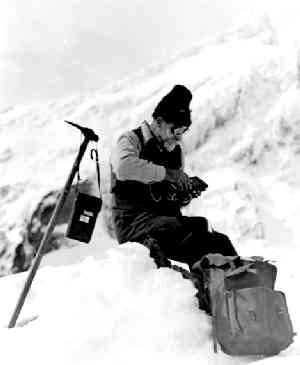

 |
|
|
CRATERS ON THE MOON
During the same years, a debate was raging among astronomers about the origin of the craters on the moon. As with the Barringer crater, most astronomers initially assumed that those craters were volcanic. Gilbert himself, ironically, was one of the first to argue for an impact origin, in a paper published in 1893. In 1909, a German geologist advanced the same theory, based in part on the evidence presented by Barringer for the Arizona crater.
One objection to the idea of an impact origin for the lunar craters was the fact that all lunar craters are round. Astronomers assumed that most meteorites would have struck the moon at oblique angles, producing elongated craters. Barringer, however, had experimented by firing rifle bullets into rocks and mud, and had discovered that a projectile arriving at an oblique angle would nevertheless make a round hole. In 1923, Barringer's 12-year-old son Richard published an article in Popular Astronomy, using his father's rifle experiments to argue for the impact origin of the lunar craters; Barringer himself repeated the arguments a short time later in the Scientific American.
Ultimately, astronomers such as A.C. Gifford were able to demonstrate that the force of an impact at astronomical speeds would result in the explosion of the meteorite. Whatever the original angle of impact, the result would be a circular crater.
Amazingly, the idea that the Moon's craters were the result of impacts was not fully accepted in the scientific community until the 1960's. Although Ralph Baldwin's groundbreaking book, The Face of the Moon, was first published in 1949, it was over ten years before a new generation of scientists finally adopted his ideas.
REFERENCES